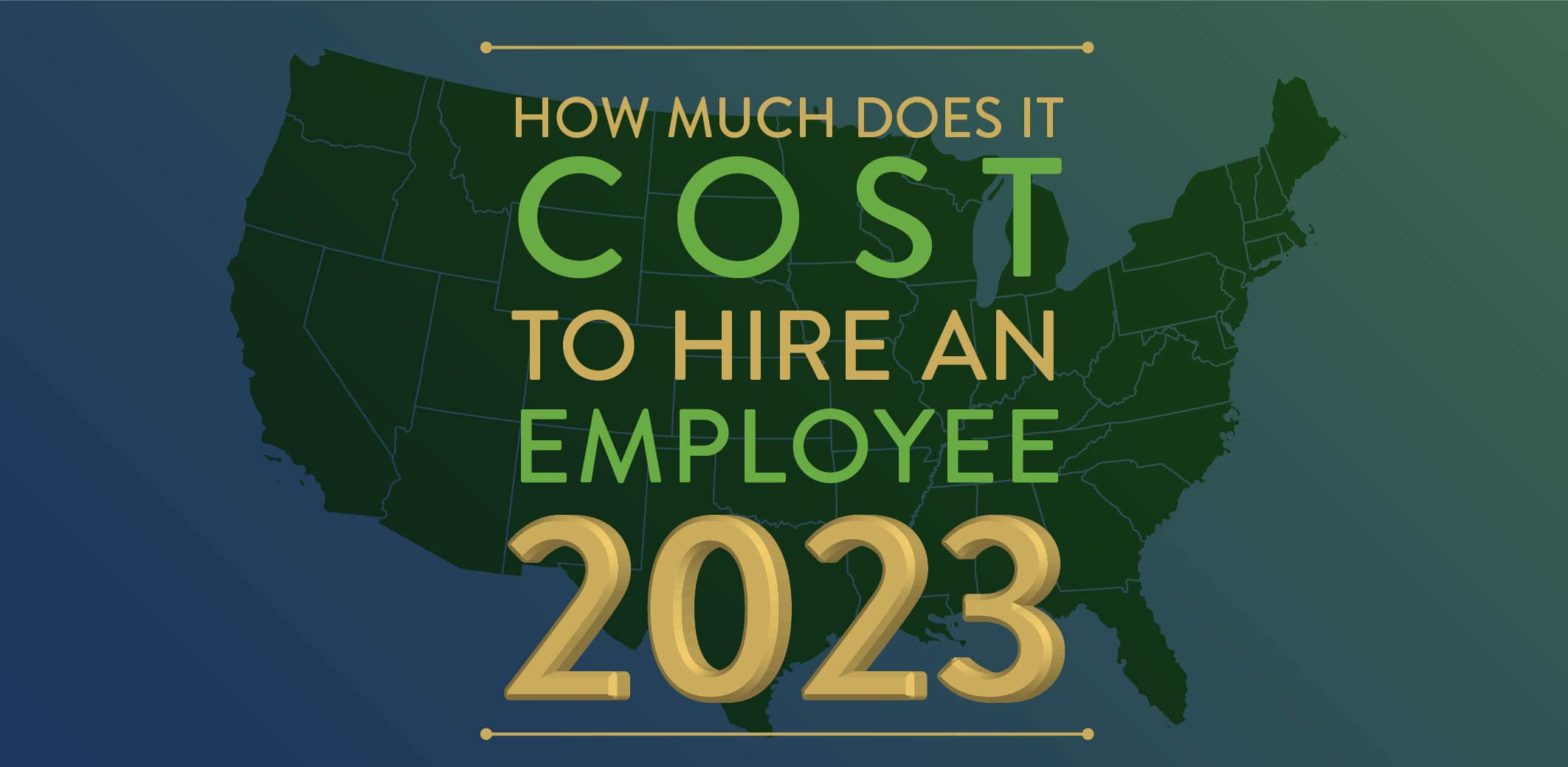How Much Does it Cost to Hire an Employee in 2023?

Maybe like other small business owners, you’ve learned on your own that employees–though set at an hourly or salaried rate–will cost you more than the agreed rate of compensation. As an employer, you’re on the hook for certain taxes, benefits, miscellaneous expenses in addition to compensation.
These additional fees aren’t necessarily astronomical; but they begin to add up if you’re unaware of them and could eat away at cash flow if you’re unprepared.
Payroll Taxes:
Payroll taxes will be the largest expense eating away at the cash flow of your small business. When calculating the total cost of an employee, it’s critical to consider payroll taxes first.
Payroll taxes will add up quickly and significantly, so be sure to forecast these costs before you hire more help than you need.
A Simple Price? Not Quite.
Simply put, you’ll never know the dollar-for-dollar figure of an employee. And you’ll probably lose your mind if you start trying to get that granular.
But the Small Business Administration has a formula that can get you started with an accurate estimate.
If most of your hires are salary-based, this is a good place to start building your estimated cost. The formula is: 1.25 to 1.4 times base salary range. See this formula in action using the example below.
Example: If an employee is making a salary of $55,000, the employer should estimate to pay between $68,750 and $77,000 per year.
$55,000 x 1.25 = $68,750
$55,000 x 1.4 = $77,000
It's a powerful tool that can bring you closer to the total estimate. But for a full scope, be sure to consider these payroll taxes, benefits, and additional costs.
What If I Don't Have Any Salaried Employees?
For small business owners with more contracted workers, or hourly employees instead of salaried employees, consider tracking the following expenses on a monthly or quarterly basis:
- Social Security (FICA) taxes. The 2023 rate is 7.45% and includes social security tax and Medicare.
- Federal Unemployment (FUTA) tax. The 2023 rate is 0.6% up to 7,000 in wages (.006 x 7000 = $42 FUTA per employee.)
- State Unemployment (SUI) tax. Find the current rate in your state here.
- Worker’s Compensation. Know your rates per employee.
Additional Considerations:
- Paid Family Medical Leave. This type of insurance is currently not available in all states. Though it’s been rolled out in several, and more states are creating similar programs every year.
- Health Insurance. At the federal level, employers are not required to provide health insurance to employees but it’s mandated in some states. Small business owners paying for over half the cost of the organization’s health insurance may be eligible for a federal tax credit.
- Retirement Plans 401(k), IRAs, and/or Annuities. These retirement saving plans are sometimes offered by employers with competitive match rates. These investment vehicles are an attractive perk for those working in industries that won’t see a pension.
- Bonuses. These reward-based payouts aren’t part of every small business owner’s business plan, but if it’s a perk you’re interested in, plan ahead. Is there a clear goal set for employees in order to receive this bonus? Is everyone eligible? Set clear goals and expectations for performance and review in order to protect yourself, and your employees.
Consider the last time you started a new job. Did you receive any of the following on your first day?
- Work computer with a cloud-based collaboration software like Microsoft Teams or Zoho
- Office space to work in - or a remote work stipend to offset supply costs
- Protection Equipment or Branded Clothing, or additional work-related gear
- On-site or off-site training led by a third-party (outside of the internal HR team)
These are all examples of expenses your former employer paid for for you in order to get started working and to meet the expectations of your role. Now think about your own employees. Depending on what type of industry you are in, let’s consider these types of additional expenses.
- Does your new cashier need a profile in the POS system?
- Is your daycare assistant compliant with the latest CPR certifications?
- Are the coveralls for your mechanics due to be professionally cleaned?
But Some Miscellaneous Costs Are Difficult to Quantify?
Miscellaneous costs are ambiguous, and can change based on different types of jobs and your turnover rate. These may be one-time charges or recurring fees that are easy to forget about.
While it’s difficult to track miscellaneous expenses, it’s not impossible. When in doubt, go back to the basics and start logging them in a spreadsheet.
For a full forecast on your cash flow, keep this miscellaneous spreadsheet synced with your accounting software or payroll service. If you’re working with a bookkeeper or CPA, this is something to collaborate on if you aren’t already.
Keeping a meticulous eye on profit and loss reports and cash flow can also help you decide whether or not you’re charging enough for your services. Our free checklist can help you streamline business operations and stay on track for 2023.






